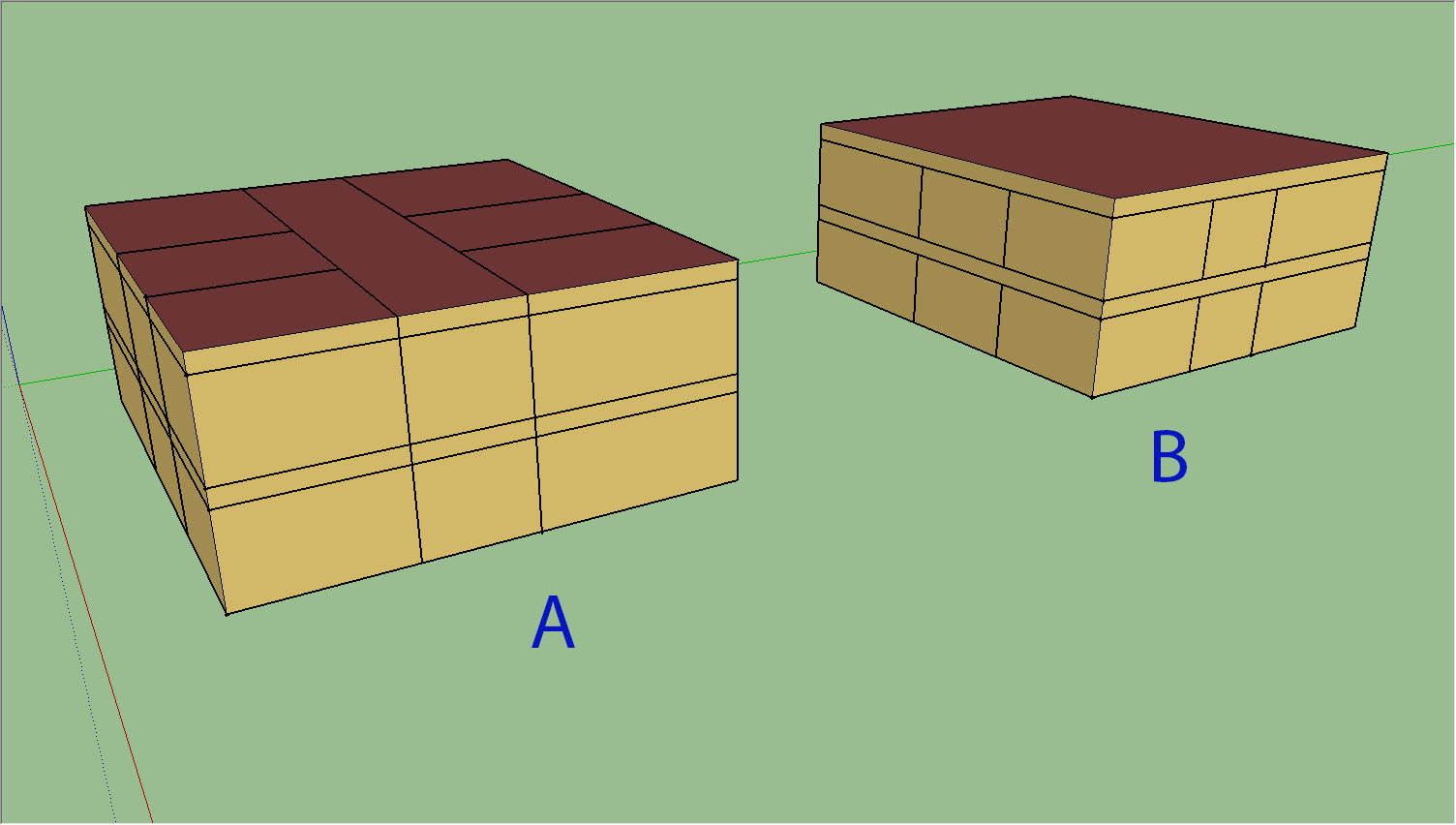Some practical considerations, depending on your next modeling steps:
- Case A1: you model individual plenum spaces as in case A and then create zones for each space. The model will have more zones, which might make your workflow cumbersome, as you will have to work around all these other zones while inputting HVAC equipment, etc., and apply each plenum zone as a return air plenum for the corresponding conditioned zone in an air loop (if you are intent to use them that way). However, you might see an advantage in simulation time, since although you have more zones, each zone will have fewer surfaces, which improves the zone air heat balance calculation time. Additionally, the simulation will be able to capture more granularity with the plenum temperatures (e.g. perimeter plenums have higher/lower temperatures than core plenums) which could effect space temperature/HVAC interaction, as well as any specific loads transferred from the conditioned space to the plenum (like heat from lights that go to the plenum).
- Case A2: you model individual plenum spaces as in case A but assign all plenum spaces (say, by floor) to a single thermal zone. This would make working in your model easier, since you have fewer total zones to work with in the model. You would possibly see longer simulation times, though, as the plenum zone has more surfaces and internal mass objects (matched surfaces between spaces that are both part of the same zone get translated into EnergyPlus internal mass objects) that require calculations for the air heat balance. Heat conduction between the plenum and the conditioned zones will also be affected, since your plenum space is now a single air volume, without any perimeter/core variation.
- Case B: functionally most similar to A2 above, except you will not have as many internal mass objects in the plenum zone, since there aren't matched 'interior' surfaces.
The method that works best for you will depend on what effects you are most concerned about in your simulation, balanced with the effort and time to set up and simulate them. I find that case B is usually fine, but admittedly have not done a comprehensive analysis of how plenum modeling effects the overall results.





